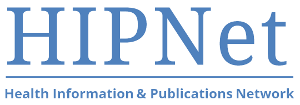Proposal: Gender Guide for Publications and Materials
Proposed Activity
A Gender Guide for Publications and Materials specific to information programs will offer guidance for how organizations can address the ‘gender information divide’ in the health workforce. This guide would help organizations, both in developed and developing countries, consider how the sociocultural roles assigned to men and women, and the dynamics between them, can affect access to and use of information in their work. It will offer guidance to organizations on:
- Ways to make the content and readability of publications more gender-sensitive;
- Ways to better design publication dissemination strategies and formats by examining gender barriers and enablers related to access and use of information and information technologies; and
- Ways to share health information more equitably among staff so that gender-defined responsibilities do not constrain in-house access.
Background and Need
This guide builds on The Health Communication Partnership’s (HCP) “A Gender Guide for Health Communication Programs,” published in 2003. The HCP guide encourages the consideration of gender-based roles and responsibilities in the design, implementation, and evaluation of health communication programs. The HCP guide, however, does not address the needs of information programs, whose programs’ audiences, program activities and products differ greatly from those of HCP’s. The target audience of information programs—men and women in health and other (media, policy) workforces—face gender-information issues that differ from communication program audiences of clients and/or communities. Also, communication programs tend to focus on a single, important issue or point, whereas information programs strive to provide both a depth and breadth of information.
Development and Costs
This publication would be a collaborative effort among HIPNet members to develop a standardized tool that can be used for a variety of materials, publications, and information services. A subgroup of HIPNet participants would work on this activity, with technical guidance from USAID’s Interagency Gender Working Group. The subgroup would meet roughly six times over the course of a year for ½ a day each meeting, and otherwise communicate by phone and e-mail. Funds in the amount of $30,000 have been provided for this project through USAID’s Global Leadership Priority Initiative.

